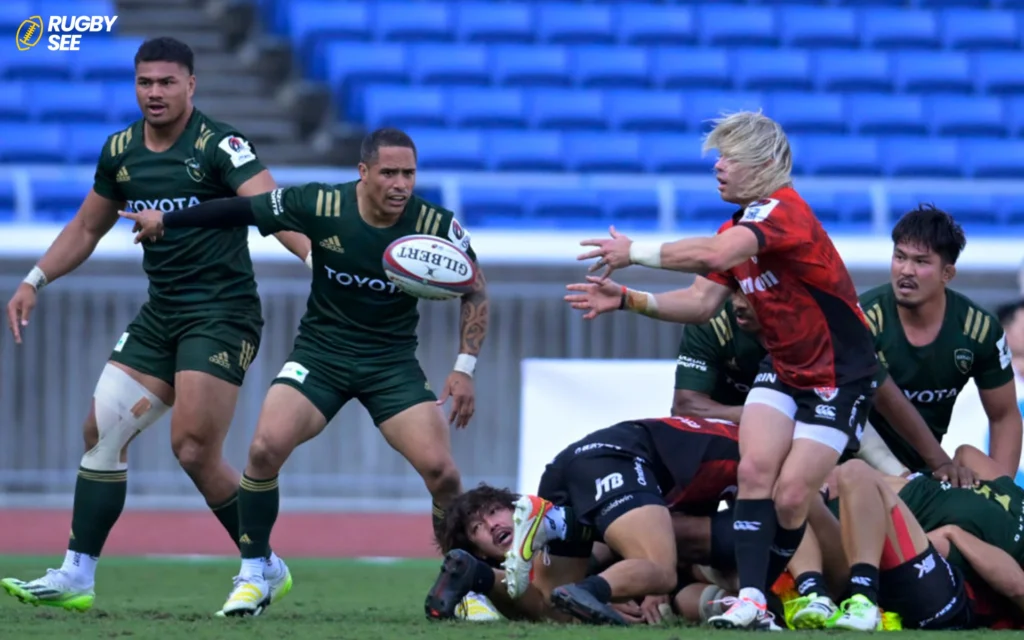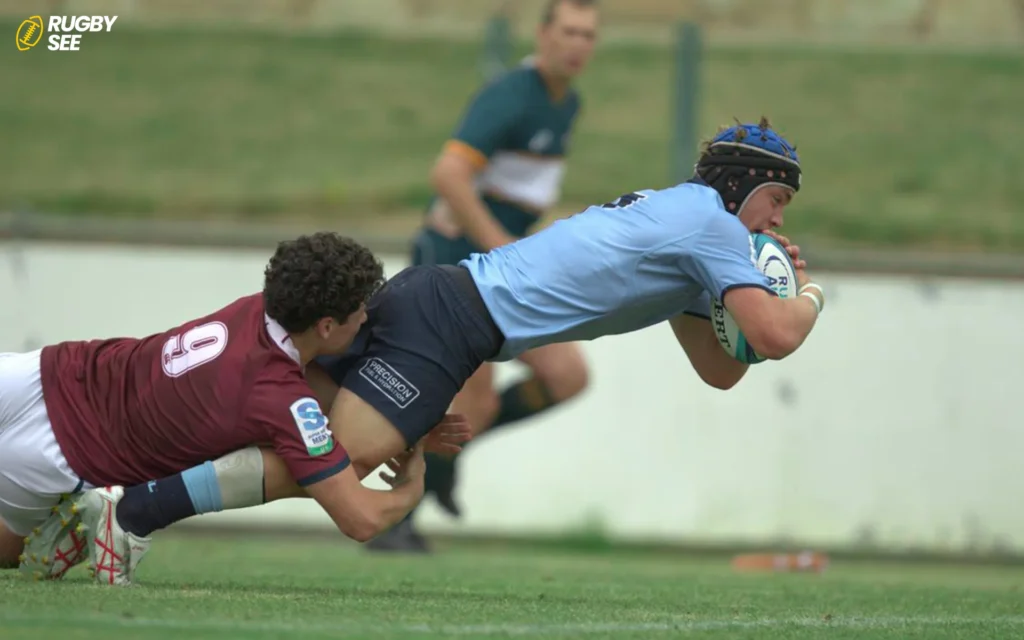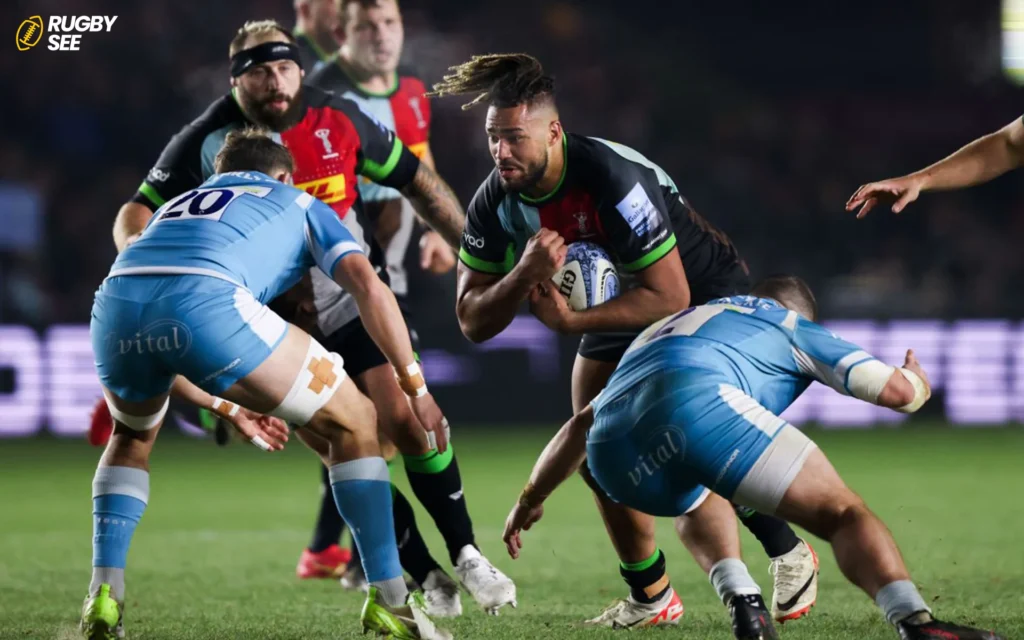In the area of team sports, rugby and American football stand out due to the intensity, physicality and high level of athleticism required to compete. These sports, while sharing some similarities, have distinct differences that contribute to ongoing debates about the athleticism of their players. This article of Rugbysee examines different aspects of the sport, compares the physical and skill demands of both sports, and examines the training and conditioning of rugby and NFL players to shed light on this debate.
Defining Athleticism
Before diving into the comparison, it’s crucial to define what we mean by “athleticism.” Athleticism encompasses several components, including strength, speed, endurance, agility, and the ability to perform in the sport. It’s also about adaptability, the capacity to learn and execute complex plays, and the mental toughness to thrive under pressure.
The Physical Demands of Rugby and NFL
Rugby: A Game of Endurance and Versatility
Rugby is characterized by continuous play, with players often covering significant distances during an 80-minute match. Rugby players must possess a blend of endurance, strength, and agility to tackle, ruck, maul, and sprint with minimal protective gear. The sport requires all players to be versatile, as forwards and backs must engage in both offensive and defensive tasks, demanding a well-rounded athletic skill set.
NFL: Specialization and Explosive Power
In contrast, American football is a game of specialized roles and explosive action. NFL players wear extensive protective gear and play in short bursts of high-intensity activity followed by breaks. This structure allows for specialization, with athletes training for specific roles that require different athletic skills. Linemen, for example, focus on strength and size, while wide receivers and defensive backs prioritize speed and agility. The result is a diverse array of athletic abilities tailored to each position’s unique demands.

Training and Conditioning
The training regimes of rugby and NFL players reflect their sports’ physical demands. Rugby players engage in a balanced mix of cardiovascular training, strength conditioning, and agility work to prepare for the varied demands of their game. This comprehensive approach ensures they can endure the match’s length, engage in physical confrontations, and recover quickly to maintain performance levels.
NFL players, given the specialized nature of their roles, often follow more targeted training programs. Linemen might concentrate on powerlifting to build size and strength, while skill positions focus on speed drills and agility training. The emphasis is on developing peak performance in their specific on-field duties, which can lead to impressive displays of specialized athletic prowess.
The Role of Skill in Athleticism
Athleticism isn’t solely about physical capabilities; it’s also about how those abilities are applied within the context of the sport. Rugby players must have a high skill level, understanding complex strategies, and executing plays with precision under fatigue. NFL players must also master a wide range of skills, from catching and throwing to tackling and blocking, often executing highly detailed playbooks that require mental acuity and physical execution.
Injury Prevention and Resilience
The toughness required to prevent and recover from injuries is another aspect of athleticism. Rugby’s continuous play and lack of extensive protective gear mean players must be adept at using proper technique to minimize injury risks. NFL players, despite their protective equipment, are subject to violent impacts that require not only physical strength to absorb but also the resilience to recover from injuries and if you want to know about getting Concussions in Rugby read Do Rugby Players Get Concussions.
The Impact of Sports Culture on Athleticism
The culture surrounding rugby and American football also plays a significant role in shaping the athleticism of their players. Rugby, with its roots deeply embedded in countries like New Zealand, England, and Wales, promotes a culture of endurance, resilience, and teamwork. This ethos influences training methods and playing styles, emphasizing a well-rounded athletic development. Rugby’s spirit of camaraderie and collective effort is reflected in the way players support each other on and off the field, contributing to the overall athleticism required to succeed in the sport.

American football, particularly in the United States, is intertwined with a culture of specialization and innovation. The sport’s competitive nature, from high school to the professional NFL level, encourages athletes to develop exceptional skills in specific roles. This drive for excellence is supported by advanced training facilities and coaching methodologies, focusing on maximizing each player’s physical potential for their designated positions. The cultural emphasis on strategy, precision, and power shapes the athletic development of NFL players, making them specialists in their field.
The Role of Nutrition and Recovery
Athleticism extends beyond physical training and on-field performance; it also encompasses nutrition, recovery, and overall health management. Rugby and NFL players alike follow rigorous dietary and recovery protocols designed to enhance performance and mitigate the risk of injury. Nutritionists and sports science teams work closely with athletes in both sports to tailor eating plans that support energy needs, muscle recovery, and body composition goals.
Recovery practices, including physiotherapy, massage, ice baths, and modern recovery technologies, are integral to maintaining athletes’ physical condition throughout their demanding seasons. These practices are crucial for longevity in sports that entail significant physical contact and the risk of injuries.
Mental Toughness and Game Intelligence
Another dimension of athleticism that distinguishes rugby and NFL players is mental toughness and game intelligence. The ability to make quick decisions, adapt to changing game situations, and maintain focus under pressure is paramount in both sports. Rugby players, for instance, must constantly assess the game, deciding when to pass, kick, or carry the ball, all while navigating the physical challenges posed by the opposing team. Similarly, NFL players must execute complex plays, read opponents’ formations, and adjust strategies on the fly, demanding a high level of cognitive agility and mental fortitude.

Athleticism in the Modern Era
In the modern era of sports, advancements in training, technology, and sports science have elevated the athletic capabilities of both rugby and NFL players to unprecedented levels. High-performance centers equipped with cutting-edge technology aid in the precise measurement and enhancement of athletic performance, from VO2 max testing to motion-capture systems analyzing biomechanics and if you want to know about Pads in Rugby read Does Rugby Have Pads? Unpacking the Gear of a Rugged Sport.
Social media and global sports coverage have also brought increased attention to the athleticism of players in both sports, inspiring younger generations to pursue excellence in rugby and American football. Aspiring athletes now have access to a wealth of information and resources to develop their athletic skills, guided by the examples set by professionals in each sport.
Conclusion: A Matter of Perspective
So, are rugby players more athletic than NFL players? The answer is complex and depends on how one defines athleticism. Rugby requires a broad set of skills and physical abilities due to the game’s continuous nature and the need for versatility among its players. Conversely, the NFL emphasizes specialized skills and physical attributes tailored to maximize performance in specific roles.
Both rugby and NFL players exhibit exceptional athleticism, but their sports demand different athletic qualities. The debate may ultimately come down to personal preference or the specific athletic qualities one values most. What is clear, however, is the admiration and respect both sets of athletes deserve for their dedication, skill, and physical prowess in their respective sports.










